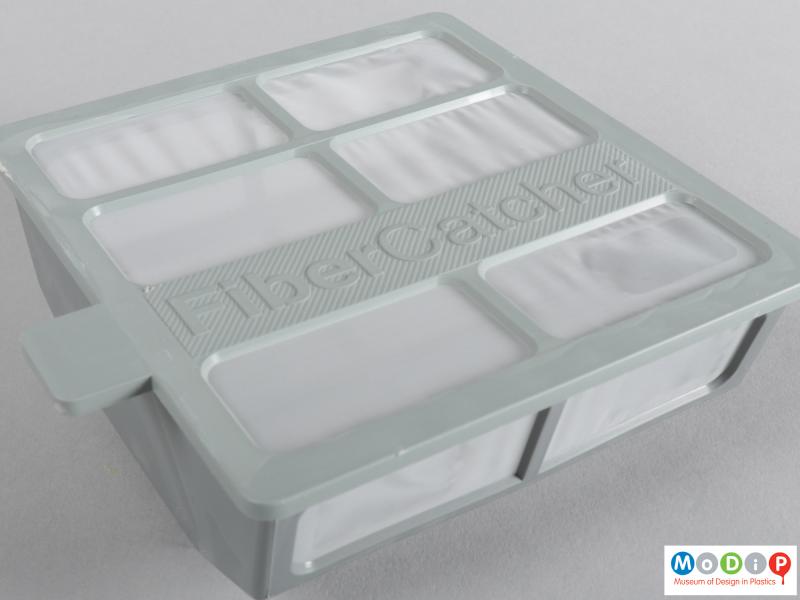
One of the themes in our current exhibition, Seen and unseen, is Microplastics. I thought I would use this blog post to think about what microplastics are and why they are an issue. The case is particularly looking at microfibres which are shed from our clothing.
Microplastics are released into the environment at many points of the lifecycle of plastics products including during production, transportation, use and the end of the products useful life. There are two types of microplastics; primary and secondary. Secondary microplastics are formed when larger objects become mismanaged waste in the oceans and landscape where they breakdown into smaller and smaller pieces. Primary microplastics are those that enter the environment as particles such as glitter in cosmetics, abrasion from car tyres and through washing our clothes as microfibres.
Microfibres are fragments of up to 5mm in length and one fifth the diameter if a human hair, they shed from all fabrics whether that be synthetic or natural. The majority of the microfibres in the environment are generated through the laundry process.
How are microfibres released from clothing?
Most microfibres are released from clothing during the very first few washes, but as fabrics age and wear out they also release microfibres. Laundering clothes can exacerbate the release of fibres as the clothe rub against each other. Long wash cycles, higher temperatures and washing powder all increase the number of microfibres generated, whilst the use of fabric softeners can help reduce the friction and therefore the fibre damage. Microfibres, once released into the washing machine, are discharged into our wastewater systems. Wastewater treatment plants are able to filter out some of the microplastics, but some will inevitably end up in the environment.
Why are microfibres bad?
It is estimated that over 14 million tonnes of microplastics have accumulated on the floor of the World’s oceans. They are consumed by living organism including plankton, fish, marine mammals, and land creatures. High levels of exposure to microplastics can induce inflammatory reactions and toxicity, and play a role in the spread of pathogens and microbes.
What can you do?
You have a number of options. You can…
- Only wear natural fabrics which will shed fibres that will biodegrade. There are, however, a few considerations that need to be made here for example the dyes used can have a toxic impact on the environment, and check if the garment has any additions of synthetic materials such as elastane.
- Choose clothing that has been made using fabric that has a tighter weave such as the Evolution Polartec Power Air Fleece and the Mono Air Houdi currently on display in the museum. These fabrics are designed to release less fibres that those with a looser weave.
- Reduce the number of times you wash your clothes by spot clean stains and refreshing your clothes by hanging them out for the air to flow around them.
- Use a shorter washing cycle and a lower temperature and fill the washing machine up so that the clothes do not rub against each other too much.
- Use a liquid rather than powder detergent.
- Use microfibre collectors within your washing machine to collect at least some of the loose fibres and then dispose of them in the rubbish. This does mean that they will end up in landfill, but it will keep them out of the water ways.
- Fit an external filter to your washing machine or when you are buying a new machine get one with a filter already fitted, some examples are on display in our current exhibition.
Louise Dennis, Curator of MoDiP
Resources
https://www.eea.europa.eu/publications/microplastics-from-textiles-towards-a
https://news.un.org/en/story/2019/03/1035161
https://www.sciencedirect.com/science/article/pii/S2405844021012081
https://goodonyou.eco/what-to-do-about-microfibres/
https://goodmakertales.com/how-to-avoid-microplastics-in-clothing/
